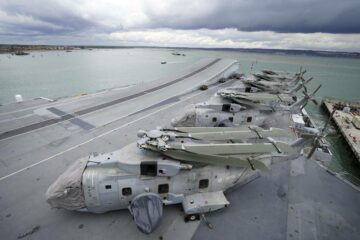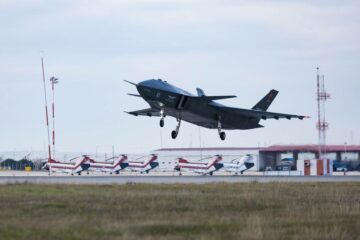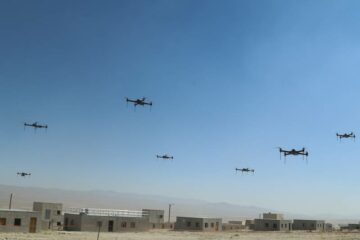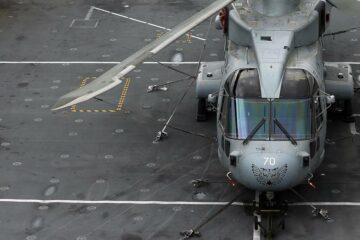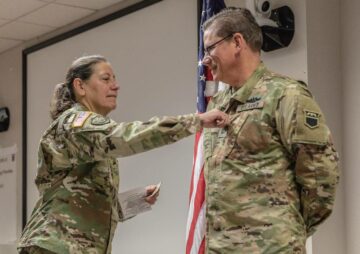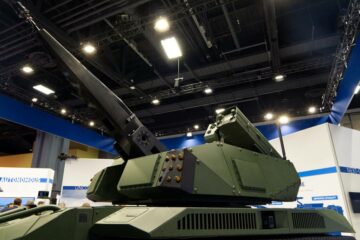
WASHINGTON — The U.S. Army’s new missile defense radar defeated a cruise missile in a development test, RTX’s Raytheon said.
The company is the developer of the Lower Tier Air and Missile Defense Sensor, or LTAMDS, that will replace the service’s original Patriot air and missile defense radar with the capability to defeat ballistic missiles and other complex threats from all directions .
In the test, LTAMDS detected and tracked a cruise missile surrogate flying in a threat-representative path and passed data to the Northrop Grumman-developed Integrated Battle Command System, the brains of the Army’s air-and-missile defense architecture, Raytheon said in a statement Monday. IBCS directed a Patriot Advanced Capability-3 missile to fire and LTAMDS guided the missile to intercept the target, according to the company.
The testing will lead to LTAMDS achieving operational capability by the end of the year, Raytheon said.
The Army awarded a contract to Raytheon four years ago to build the new radar. The contract requires the company to deliver six of the systems.
“Seeing LTAMDS come to life is not only gratifying to the scores of experts who designed and developed it, but it reaffirms the commitment we made to deliver this exceptional radar to air defenders around the globe,” Tom Laliberty, company president of land and air defense systems, said in the statement.
All six radars under contract have been built, according to Raytheon, and are all in simultaneous testing at both U.S. government and company test sites.
Testing will continue in 2024 including environmental and mobility qualification, among other test events and will lead to a “full operational capability in the calendar year,” the statement said.
Split development
The Army has had to split development testing of LTAMDS into two phases. The radar has three arrays; a main one and two in the back that give it the ability to see threats from 360 degrees.
“Last year, when I first came on board, through some system engineering reviews, we realized that trying to do all 360 degrees of tracking was too much to take on at once,” Brig. Gen. Frank Lozano, the Army’s program executive officer for missiles and space, told Defense News in an interview earlier in 2023.
As a result, the first year of testing will focus on the main array and the second year, in 2024, will be dedicated to full-sector capability testing, incorporating the back two arrays, Lozano said. In addition to integration challenges, the program also faced supply chain delays caused by the Coronavirus pandemic.
The phased approach addresses a congressional mandate requiring the Army field an LTAMDS battalion of four sensors by December 2023.
The first unit equipped will receive “residual combat capability” that already exceeds legacy radar capability,” Lozano said.
The plan now is to conduct an operational assessment in the first quarter of fiscal 2025 that will lead to an Engineering and Manufacturing Development decision in FY25, according to Lozano.
The Army is also required to field three additional LTAMDS for the defense of Guam. And Raytheon is also signed on to produce LTAMDS radars for Poland as its first foreign customer for the new radar.
Jen Judson is an award-winning journalist covering land warfare for Defense News. She has also worked for Politico and Inside Defense. She holds a Master of Science degree in journalism from Boston University and a Bachelor of Arts degree from Kenyon College.
- SEO Powered Content & PR Distribution. Get Amplified Today.
- PlatoData.Network Vertical Generative Ai. Empower Yourself. Access Here.
- PlatoAiStream. Web3 Intelligence. Knowledge Amplified. Access Here.
- PlatoESG. Carbon, CleanTech, Energy, Environment, Solar, Waste Management. Access Here.
- PlatoHealth. Biotech and Clinical Trials Intelligence. Access Here.
- Source: https://www.defensenews.com/electronic-warfare/radar/2023/11/20/raytheon-radar-defeats-missile-in-us-army-test-of-patriot-replacement/
- :has
- :is
- :not
- 2023
- 2024
- 360
- 70
- 8
- a
- ability
- According
- achieving
- addition
- Additional
- addresses
- advanced
- ago
- AIR
- All
- already
- also
- among
- an
- and
- approach
- architecture
- ARE
- Army
- around
- Array
- Arts
- AS
- assessment
- At
- award-winning
- back
- Battle
- BE
- been
- board
- boston
- Boston University
- both
- brains
- build
- built
- but
- by
- Calendar
- came
- capability
- caused
- chain
- challenges
- College
- combat
- come
- commitment
- company
- complex
- Conduct
- Congressional
- continue
- contract
- Coronavirus
- Coronavirus pandemic
- covering
- cruise
- customer
- data
- December
- decision
- dedicated
- Defenders
- Defense
- Degree
- delays
- deliver
- designed
- detected
- developed
- Developer
- Development
- directed
- do
- Earlier
- end
- Engineering
- environmental
- equipped
- events
- exceeds
- exceptional
- executive
- Executive Officer
- experts
- faced
- field
- Fire
- First
- Fiscal
- flying
- Focus
- For
- foreign
- four
- frank
- from
- Gen
- Give
- globe
- Government
- guided
- had
- Have
- holds
- HTTPS
- i
- images
- in
- Including
- incorporating
- inside
- integrated
- integration
- Interview
- into
- IT
- ITS
- journalism
- journalist
- jpg
- Land
- lead
- Legacy
- Life
- lower
- made
- Main
- mandate
- manufacturing
- master
- missiles
- mobility
- Monday
- much
- New
- news
- now
- of
- Officer
- on
- once
- ONE
- only
- operational
- or
- original
- Other
- pandemic
- passed
- path
- Phased
- plan
- plato
- Plato Data Intelligence
- PlatoData
- president
- produce
- Program
- qualification
- Quarter
- radar
- reaffirms
- realized
- receive
- replace
- replacement
- required
- requires
- result
- Reviews
- s
- Said
- Science
- scores
- Second
- see
- sensors
- she
- simultaneous
- Sites
- SIX
- some
- Space
- split
- Statement
- supply
- supply chain
- system
- Systems
- Take
- Target
- test
- Testing
- that
- The
- this
- threats
- three
- Through
- tier
- to
- told
- tom
- too
- Tracking
- trying
- two
- u.s.
- U.S. government
- under
- unit
- university
- was
- we
- when
- WHO
- will
- with
- worked
- year
- years
- zephyrnet

